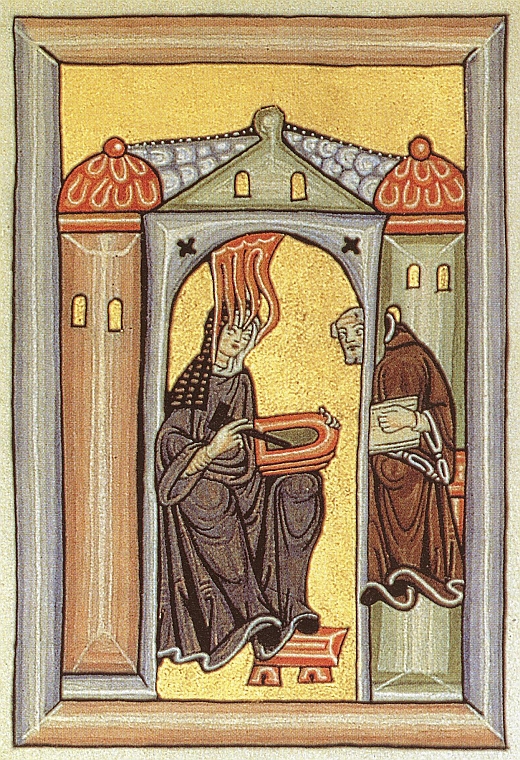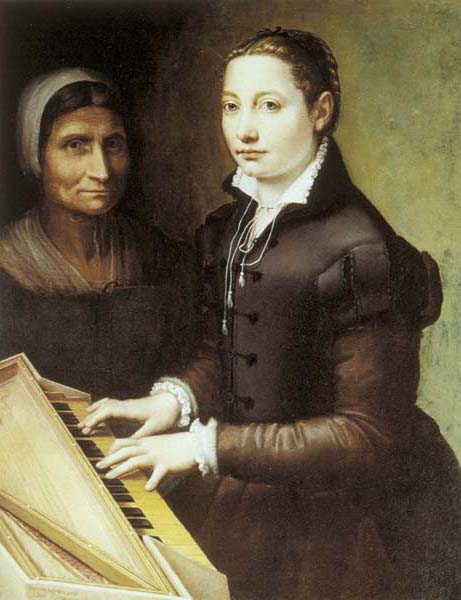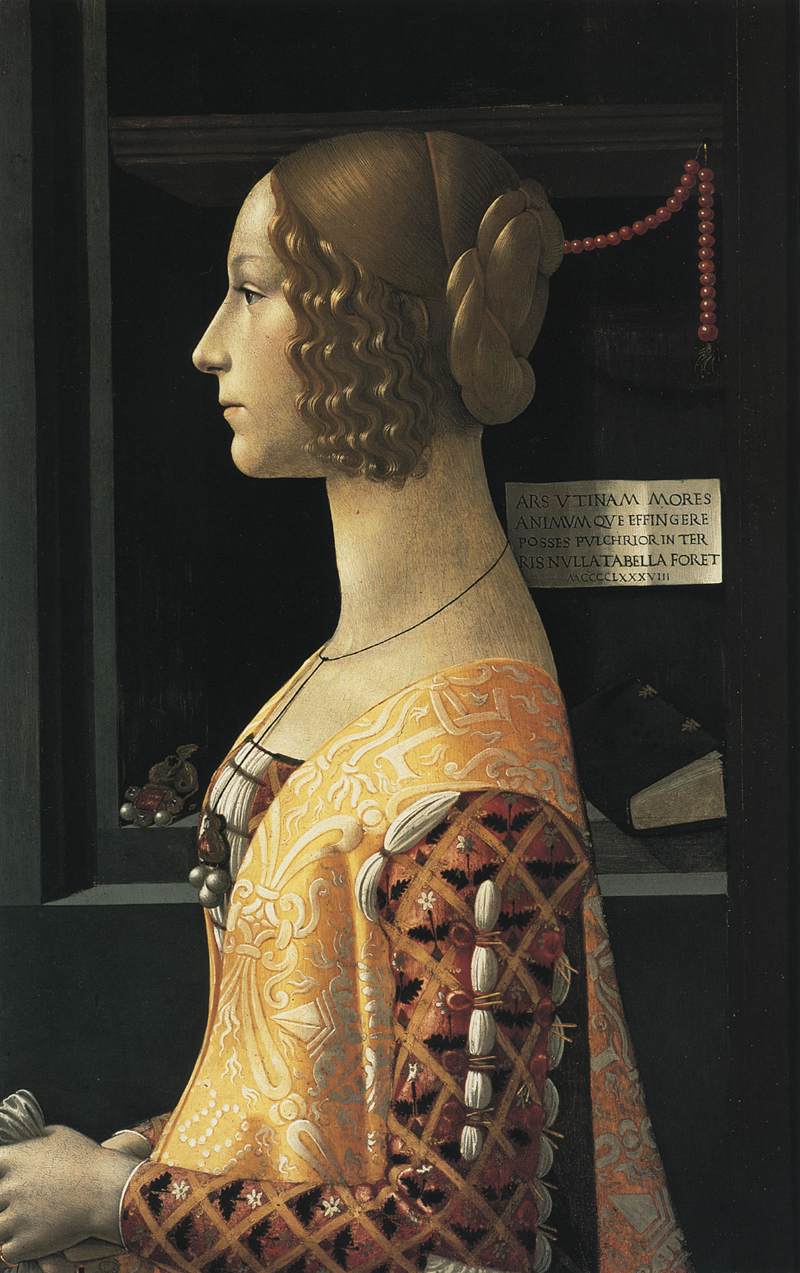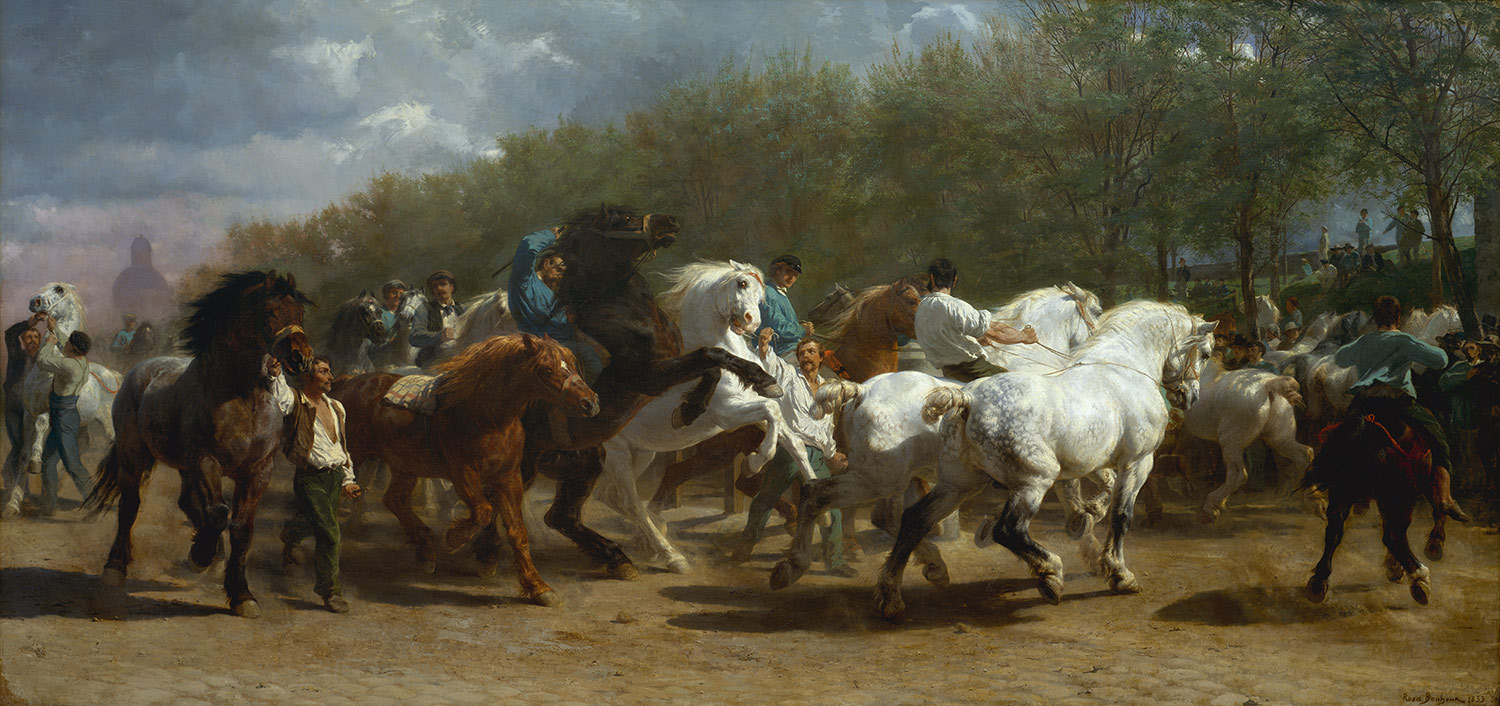There is no denying that there has been a change in the role
of women, which is expressed in the Artistic renditions throughout the Middle
Ages, through the Renaissance, and up until the 19th century. In
beginning of the study of women, we realize that women were given the filial
responsibility and were bare of power. The Renaissance began primarily with the
portrayal beauty and attraction that is coupled with the male gaze. As time
passed on, there was a connection portrayed between women and their art, higher
thinking, and reason began to bloom.
The middle ages were an interesting period of time where art and the roles and expectations of women were constituted. Women were subjected to their emphasis on labor, virtuosity, and pureness. Whitney Chadwick writes “Our knowledge about the daily lives and customs of women in the Middle Ages owes much to representations emphasizing their labor, as in a thirteenth-century manuscript illumination of a woman milking a cow” (43). Chadwick points our attention to the huge inclusion of women in the labor forces and continues to say, “and there is evidence that they participated in all forms of cultural production from masonry and building to manuscript illuminating ad embroidery” (44). Chadwick does not stop there, but offers that the Church was a humongous force in the “Western medieval life” and we can see this from the painting of Scivias, from Hildegard of Bingen, 1142-52. Here a woman is depicted not only as virtuous but also given the task for writing manuscripts. Hildegard’s representation shows the role of women extended not just labor, but women of high religious value. History tries to show through art that women during the Middle ages were a large part of society and culture that included women doing spinning, embroidery, as well as masonry, and the presence in religious contexts.
 Hildegard of Bingen, Scivias 1142-52
Hildegard of Bingen, Scivias 1142-52
During the
Renaissance, the atmosphere dramatically changes in the Western world.
Capitalism takes a strangling grip on Europe and Chadwick argues, “the development
of capitalism and the emergence of the modern state transformed economic,
social, and familial relationships in Renaissance Italy. […] It is in the
cultural ideology that supported women’s exclusion from the arts of painting
and sculpture that we find the roots of the subsequent shift of woman’s roles
in visual cultural from one of production to the one of being represented”
(67). The status of women producing art to the subject that is being produced
is a very grim idea that can be seen in paintings of women that showed their
beauty, sexuality, and the female form. But the Renaissance was not all gloomy,
and through the darkness came through several women who dared to challenge the
role of women.
 Domenico Ghirlandaio painted the painting to the left,
Giovanna Tornabuoni, (1488): and it showed the beautiful aspect of the women.
This women was portrayed to be upper-class, wealthy, and powerful yet nothing
about her actions shows that and her beauty is what seems have rewarded her of
her status. The painting below Ghirlandaio's was quite the opposite. Sofonisba
Anguissola (mind you that this is a women painting this) constructed a
self-portrait that did not emphasize beauty but intellect and ability. Her
depiction of women as more than a tool for sexuality challenged (and offended)
many of the male dominant theories of sex. During the renaissance, other women
challenged such overbearing ideologies of women, such as Artemisia Gentileschi
who often painted women being mistreated and their rebellion to such practices.
The role of women was changing, and the Renaissance was a great time for
historians to see such changes. The beginning of the metamorphosis of roles
that were seen included belonging of women in Art academies, women in religious
ceremonies (as seen in Diana Scultori’s Christ
and the Women Taken in Adultery 1575), as well as women demand of
intellectual and cultural independence. Though women seem to have emerged from
the dark and into this new expanded role, both Chadwick and the guerrilla girls
make it very clear that women from nobility and wealth (or those who’s family
had a history of art and art academies) were painting and making a splash in
the society of Italy.
Domenico Ghirlandaio painted the painting to the left,
Giovanna Tornabuoni, (1488): and it showed the beautiful aspect of the women.
This women was portrayed to be upper-class, wealthy, and powerful yet nothing
about her actions shows that and her beauty is what seems have rewarded her of
her status. The painting below Ghirlandaio's was quite the opposite. Sofonisba
Anguissola (mind you that this is a women painting this) constructed a
self-portrait that did not emphasize beauty but intellect and ability. Her
depiction of women as more than a tool for sexuality challenged (and offended)
many of the male dominant theories of sex. During the renaissance, other women
challenged such overbearing ideologies of women, such as Artemisia Gentileschi
who often painted women being mistreated and their rebellion to such practices.
The role of women was changing, and the Renaissance was a great time for
historians to see such changes. The beginning of the metamorphosis of roles
that were seen included belonging of women in Art academies, women in religious
ceremonies (as seen in Diana Scultori’s Christ
and the Women Taken in Adultery 1575), as well as women demand of
intellectual and cultural independence. Though women seem to have emerged from
the dark and into this new expanded role, both Chadwick and the guerrilla girls
make it very clear that women from nobility and wealth (or those who’s family
had a history of art and art academies) were painting and making a splash in
the society of Italy.
During the
Renaissance in the 16th century, artists began to portray women with
a domesticated approach, which would carry for some time. For example, Judith
Leyster painted quite of a few of paintings depicting woman knitting, writing,
and other forms of trades that were not shown before. There is a sense of domestication
that arises in the Northern part of Europe whereas the artists in Italian
culture were painting symbolic paintings of tyranny, oppression, and a
intellectual revolution.
As a
historian, now we find ourselves in the 19th century, and
predominantly studying the English transition of the roles of women. In
England, as well, in France, and the United States, female artists began to
adopt the male form of painting and qualities. Chadwick writes,
The qualities which defined the
artist-independence, self-reliance, competitiveness- belonged to a male sphere
of influence and action. Woman who adopted these traits , who turned their
backs on amateur artistic accomplishments , accepted as beautifying or morally
enlightening, or who rejected the flower painting in watercolor for historical
compositions in oil, risked being labeled as sexual deviants. Art reviews from
the period were full of charges that aspiring women artists rick ‘unsexing’
themselves. (Chadwick 177)
Chadwick reveals that woman were abandoning the classic
forms of art the beautified themselves. She mentions that the economic divide
between the middle class and the upper class was also changing and that more
and more artists were painting about the divisions of power that emerged from
the differences that money created. There was a big class between money/power
and the growing middle class, and it was very evident. For instance, Edith
Hayllar Feeding the Swans, 1889 portrays
a wealthy family and subconsciously is defining the roles of wealthy,
upper-class woman. On the other hand, you have the Illustrated London News talking publishing “Lady Students at the
National Gallery” and shows an intellectual side of female culture. You have
Ana Blunden’s the seamstress
portraying the Industrialization of England where a poor woman looks out of a
window instituting that she has hope for social mobility.
Not only do
you see a divide between the rich and the poor, but also you see the critical side
of this period in history. You can see this divergence in the 19th
century in detail here http://www.youtube.com/watch?v=lj9oTsxb-8s
. Evelyn Pickering de Morgan’s Medea
(1889) and Rosa Bonheur’s The Horse Fair
(1855) as well as Plowing in the Nivernais
(1848) paintings critique the roles of sexuality. Bonheur challenges the
idea that woman are not facilities for male dominance and pleasure.
In
conclusion, the roles of woman are ever changing. From the Middle Ages to the
19th century, one ideology of female roles eclipses another.
Contrasting ideas and notions began in the Renaissance as the depiction of
woman changed drastically and even more so as capitalism emerged.
Bibliography
Chadwick, Whitney. Women,
Art, and Society. 4th ed. New York, NY: Thames and Hudson, 1990. Print.
The Guerrilla Girls. The
Guerrilla Girls' Bedside Companion to the History of Western Art. New York,
NY: Penguin Group, 1998. Print.
All pictures were taken from google but were referenced from the Guerrilla girls and Chadwick



No comments:
Post a Comment